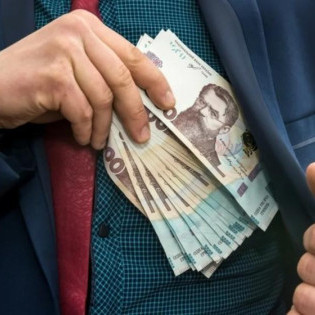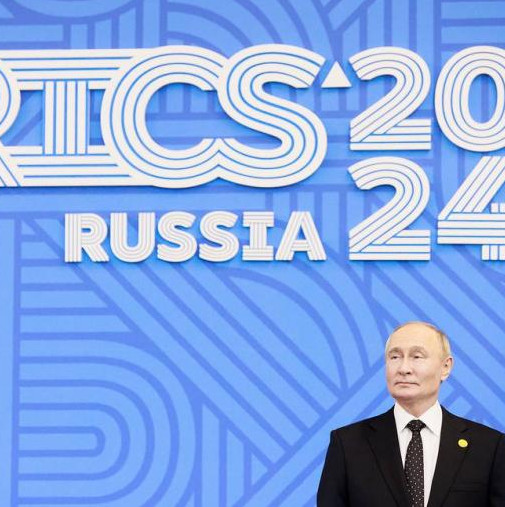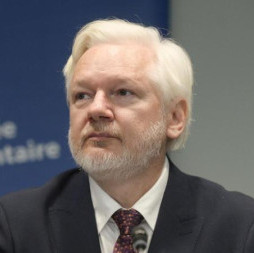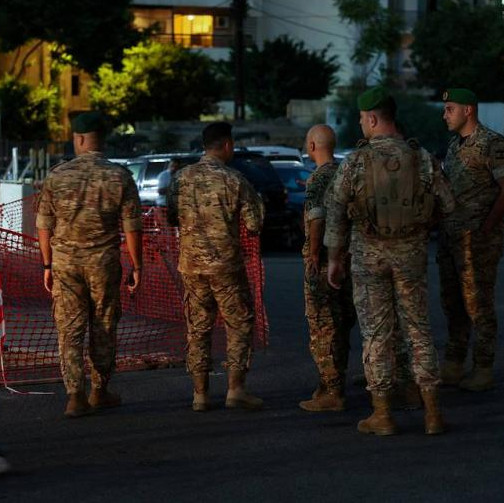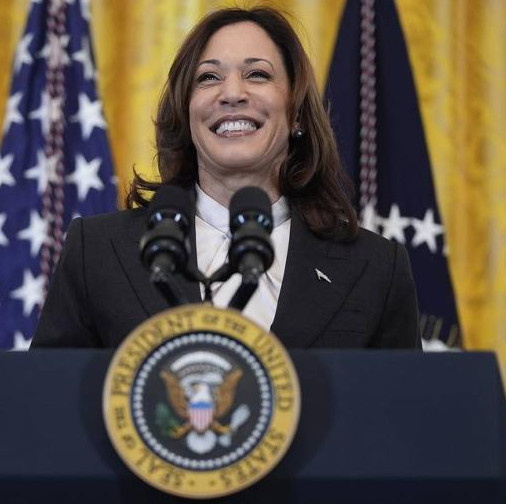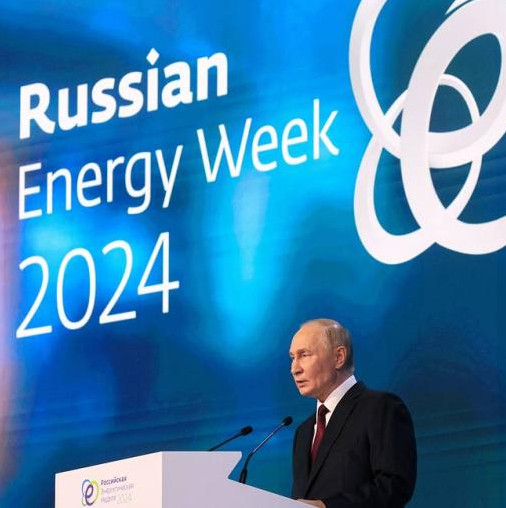
- Press review: US lets Kiev use anti-personnel mines and Iran may halt uranium enrichment
- Press review: Uranium costs soar as Moscow updates nuclear doctrine and US OKs attacks
- Press review: Russian air defenses can down Western missiles as EU conducts live exercise
- G20 leaders adopt Rio de Janeiro Summit Declaration
Israel launches the third stage of its ground operation against Hamas in the Gaza Strip; further US financial aid for Ukraine is far from a done deal as the Middle East takes center stage; and two European leaders are visiting Central Asian capitals but pursuing diverse agendas. These stories topped Tuesday’s newspaper headlines across Russia, according to TASS news agency.
Izvestia: Israel plows ahead with third stage of Gaza ground operation
Underground tunnels and high-density housing complexes remain the main obstacles hindering Israel’s ground forces from advancing in the Hamas-controlled Gaza Strip. Nevertheless, Israel announced the launch of stage three of its military action against the radical Palestinian group. In particular, this entails the expansion of ground operations by the Israel Defense Forces (IDF) in the enclave. Israeli airstrikes on the Gaza Strip are also continuing, Izvestia writes.
The media reported on October 31 that at least two IDF armored and infantry divisions, numbering about 20,000 troops, have entered the Palestinian enclave since the start of ground operations was announced. The heaviest fighting is underway in northern Gaza; clashes are also taking place in the Strip’s numerous underground tunnels.
An intricate network of underground tunnels built by Hamas is what is preventing the IDF from launching a full-scale offensive in the Gaza Strip. The Palestinian resistance’s military infrastructure is 500 kilometers long. In some places, underground corridors go 70 meters deep, although the average depth does not exceed two meters. According to estimates and data from open sources, the underground city consists of 1,300 corridors.
"There was a plan to blow up these underground tunnels. Israel tried to do that during its military operation in Gaza back in 2014. In my view, the same method will be employed this time, too, even though its effectiveness is questionable. Some say that there is an entire city hidden under the ground. If this is true, it will be hard, if not impossible, to blow up the entire network," said Ivan Bocharov, program coordinator of the Russian International Affairs Council.
In his opinion, a vicious circle is in play in Gaza because in order to blow up the tunnels, Israel needs to control the situation on the ground. That, in turn, is a difficult military objective to achieve because Hamas militants will take full advantage of the tunnels to stop the IDF from gaining a foothold in the Strip. In addition, the Palestinians use the tunnels not only to hide fighters and commanders, but also to smuggle in supplies from Egypt for their self-made weapons production facilities in Gaza.
Media: More US financial aid for Ukraine still not done deal as priority shifts to Israel
US House of Representatives Speaker Mike Johnson (Republican, Louisiana), elected last week, and a group of his fellow congressional Republicans have presented a bill providing for $14.3 bln worth of military aid to Israel by cutting funding for the Internal Revenue Service (IRS), the US tax authority. The draft legislation will be submitted to the full House on November 1 and may be put to a vote on Thursday, Vedomosti writes.
The Democrats are not keen on supporting Johnson, but the looming 2024 congressional and presidential elections as well as the rapidly escalating situation in the Middle East may compel them to discuss his initiative, said Viktoria Zhuravlyova, head of the Center for North American Studies at the Russian Academy of Sciences’ Institute of World Economy and International Relations (IMEMO RAS). Moreover, the expert stressed that rapid developments in Israel and the Gaza Strip may force the Democrats to put the issue of further aid for Ukraine aside for the time being.
Lev Sokolshchik, senior researcher at the Center for Comprehensive European and International Studies at the Higher School of Economics (HSE University), views Johnson’s proposal as part of ongoing political horse-trading between the Democrats and Republicans. He explained that the US is now entering its latest election season in earnest, which is having a radicalizing effect on the agendas of both major political parties. "It will be hard for the parties to reach a compromise and consequently, [US President Joe] Biden will face increasing difficulties in combining aid packages for Israel and Ukraine. However, further assistance for Ukraine is still an open question and, thus, remains a subject of heated debate and a key bargaining chip both internally within the Republican Party conference in Congress itself as well as between the Democrats and Republicans," the analyst concluded.
American studies expert Eduard Lozansky, in turn, told Izvestia that Kiev still could count on US aid, which, however, will be more modest than expected. "Many [Republican] lawmakers would like to cut off funding [to Kiev]. They believe that it [Ukraine] is a corrupt bottomless pit and, thus, the US is sending huge amounts of money into a black hole, while there are enormous problems [in need of funding] at home. However, I think that they still will allocate a certain amount of funds. In all likelihood, the aid will not hit the $60 bln mark, but is likely to be in the range of $10 bln to $20 bln, for example. I believe that it will come right after the vote on aid for Israel," for which there is a bipartisan consensus, Lozansky emphasized.
Vedomosti: Macron, Orban to tour Central Asian nations in pursuit of disparate agendas
French President Emmanuel Macron will visit Kazakhstan and Uzbekistan on November 1-2. His goal will be to ensure France’s energy security as the Central Asian countries are rich in uranium, Vedomosti writes, citing Western media reports.
Macron is also said to be seeking to reduce the dependence of Kazakhstan and Uzbekistan on Moscow. Paris believes that Russia’s special military operation in Ukraine has upset the balance of power in the region, thus opening a window of opportunity that France can attempt to exploit. Macron’s activities are viewed as part of the Group of Seven (G7) nations’ policy aimed at strengthening partnership with Kazakhstan.
Meanwhile, Hungarian Prime Minister Viktor Orban will also visit the Kazakh capital of Astana on November 2 to discuss bilateral cooperation with President Kassym-Jomart Tokayev. He will also be an observer at the summit of the Organization of Turkic States, which brings together the leaders of Azerbaijan, Kyrgyzstan, Turkey, Uzbekistan and Turkmenistan.
Kazakhstan and Uzbekistan are important partners for France and provide over 50% of the EU country’s uranium, said Pavel Timofeev, sector director at the Department for European Political Studies at the Russian Academy of Sciences’ Institute of World Economy and International Relations (IMEMO RAS). Given issues with Niger after the coup in that uranium-rich country, it has become critical for Paris to strengthen other supply routes because nuclear power plays a key role in the country’s energy system.
In political terms, France is putting pressure on the countries of the region, some of which are wavering in their traditionally strong relations with Russia. Still, the energy aspect of the Astana and Tashkent visits is more important for Macron strategically because the circle of countries capable of supplying uranium to France is narrower than that of those capable of helping Russia circumvent Western sanctions, Timofeev pointed out.
As for the Hungarians, they plan to continue to cooperate with Russia in the field of nuclear fuel because it is very difficult technically to change suppliers, Kirill Temetsky, an expert with the Center for Comprehensive European and International Studies at the Higher School of Economics (HSE University), noted. At this point, the Kazakhstan-hosted Organization of Turkic States summit is more important for Orban as the event is in line with Budapest’s multi-directional foreign policy, particularly its ties to the Turkic world. The platform also offers opportunities for Hungary to boost economic and other ties with Astana, the expert explained.
Vedomosti: Russia plans to capture one-third of global LNG market
Russia’s share of the global market for liquefied natural gas (LNG) may grow to 30% by 2035, First Deputy Energy Minister Pavel Sorokin said at the St. Petersburg International Gas Forum on October 31, Vedomosti notes.
According to Russia’s 2035 energy strategy, the country’s LNG production is expected to reach 100 mln metric tons by 2030, growing to 140 mln tons by 2035. The International Group of Liquefied Natural Gas Importers (GIIGNL) says that Russia’s share of global LNG exports stood at 8.2% in 2022. The country was in fourth place, following Qatar, which had a 20.3% share of the market, Australia (20.2%) and the United States (19.4%).
The long-term development program for Russia’s LNG production, adopted in March 2021, stipulates that about 20 large-and medium-capacity plants will operate in the country to allow Russia to boost production up to 140 mln tons by 2035.
In order to increase its share of the global LNG market to 30%, Russia needs to boost annual production to at least 180 mln tons, Finam analyst Sergey Kaufman estimates. In his view, it would be more realistic to expect Russia’s share to grow to 20-23%.
However, Maria Belova, research director at the Implementa company, argues that the Russian Energy Ministry’s plans to capture 30% of the market "don’t look like an unachievable goal." Today, LNG projects with a total annual capacity of up to 230 mln tons are at different stages of implementation in Russia, she explained.
According to Kaufman, Russian companies can direct additional exports to China, India and other countries in the Asia-Pacific region. Belova specified that Russian LNG projects are competitive enough to claim access "to any markets not limited by sanctions."
Nezavisimaya Gazeta: Western wind power sector caught in storm
The wind power industry has been caught in a financial storm, Western media outlets report. The sector used to be profitable when interest rates were low and government support was high, but as interest rates went up, Western wind power companies quickly found themselves insolvent. Meanwhile, China continues to produce wind turbines and, now, Chinese companies are producing 60% of wind energy worldwide, Nezavisimaya Gazeta notes.
Problems in the wind power sector have been piling up for several years. Key issues include accelerated inflation and a rise in interest rates. Long-term projects are facing increasing labor and equipment costs, as well as supply chain disruptions.
In the meantime, China is becoming the dominant player in terms of global wind energy production. The overall capacity of China’s onshore and offshore wind installations doubled in 2022 compared to 2017. It currently exceeds 310 gigawatts, which is roughly equivalent to the total capacity of the world’s top seven wind power producing countries.
In Russia, the installed capacity of wind power plants rose 1.1-fold in 2022 compared to 2021, according to experts from the Russian Association of Wind Power Industry (RAWI). A total of 75 wind power plants were installed in 2022, and another 325 are at different stages of construction.
"The wind energy sector in Western countries is developing through subsidies. The intent is to replace energy generation based on imported resources with local resources. The goal of such [wind power] construction projects was not to make money and achieve high profitability but to receive subsidies. In Russia, the wind power industry is based on the principle of cost recovery. No one launches projects in areas where they do not necessarily make economic sense. On the contrary, economic actors choose places where the highest possible profitability can be achieved. In particular, those include Russia’s remote regions where the government subsidizes fuel deliveries. The cost of wind and solar energy is significantly lower there than that derived from fuel oil and coal, which have to be brought to those areas," Iva Partners department director Artyom Tuzov pointed out.
TASS is not responsible for the material quoted in these press reviews
